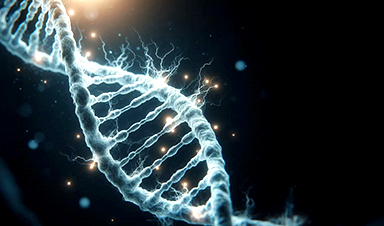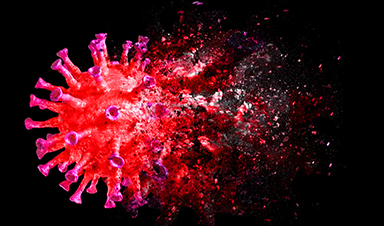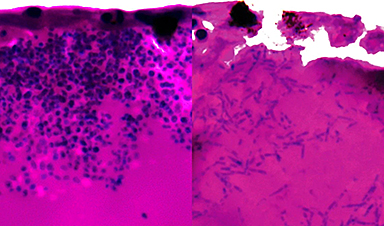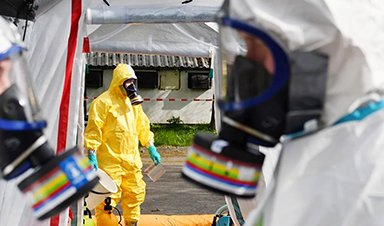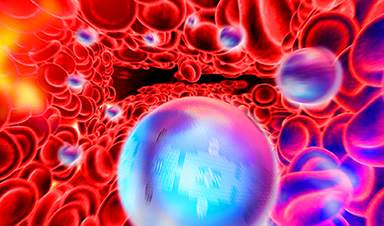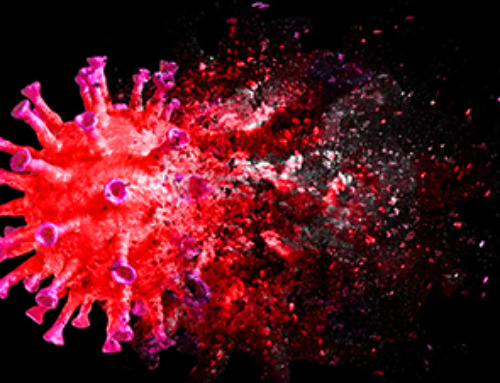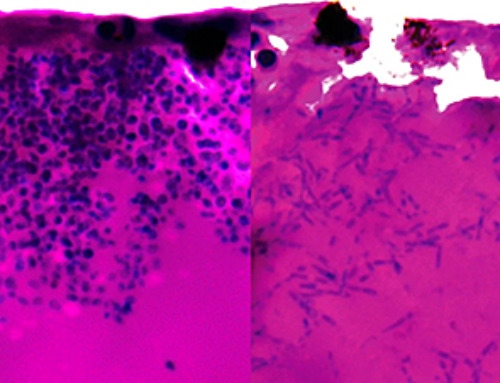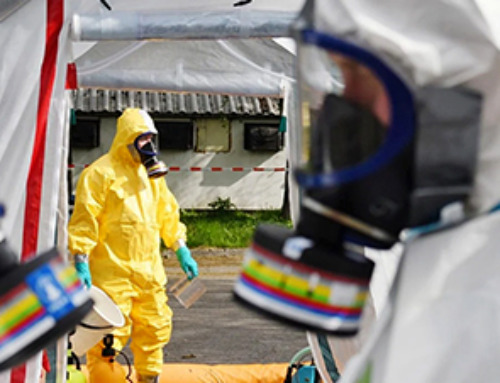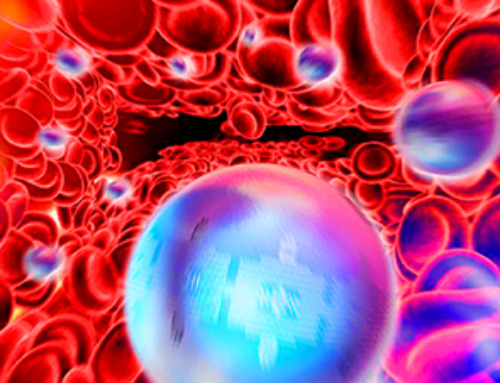Our DNA is constantly under threat — from cell division errors to external factors like sunlight and smoking. Fortunately, cells have intricate repair mechanisms to counteract this damage.
Scientists have uncovered a surprising role played by long non-coding RNA, particularly NEAT1, in stabilizing the genome. Their findings suggest that NEAT1, when highly methylated, helps the cell recognize and repair broken DNA strands more efficiently. This discovery could pave the way for new cancer treatments targeting tumors with high NEAT1 expression.
Genome Instability and Disease Risk
Every time a cell divides, its DNA is at risk of damage. To complete division, the cell must copy its entire genetic code — billions of letters long — which can lead to occasional errors. But cell division isn't the only threat. Over time, exposure to factors like sunlight, alcohol, and cigarette smoke can also harm DNA, increasing the risk of cancer and other diseases.
Fortunately, cells have built-in repair systems to counteract this damage. This process, known as the DNA damage response (DDR), activates specific signaling pathways that detect and fix errors. These mechanisms help maintain genetic stability and ensure the cell's survival.
A New Look at the DNA Damage Response
A team of scientists from Julius-Maximilians-Universität Würzburg (JMU) in Bavaria, Germany, has now taken a closer look at one of these signaling pathways. The group has identified a new mechanism of the DNA damage response that is mediated via an RNA transcript. Their results help to broaden the conceptual view on the DNA damage response and to link it more closely with RNA metabolism.
Dr. Kaspar Burger, junior research group leader at the Department of Biochemistry and Molecular Biology, was responsible for this study. The group has published the results of their investigations in the journal Genes & Development.

RNA Transcripts as Key Regulators
"In our study, we focused on so-called long non-coding RNA transcripts. Previous data suggest that some of these transcripts act as regulators of genome stability," says Kaspar Burger, explaining the background to the work. The study focused on the nuclear enriched abundant transcript 1 — also known as NEAT1 — which is found in high concentrations in many tumor cells. NEAT1 is also known to react to DNA damage and to cellular stress. However, its exact role in the DNA damage response was previously unclear.
"Our hypothesis was that RNA metabolism involves NEAT1 in the DNA damage response in order to ensure the stability of the genome," says Burger. To test this hypothesis, the research group experimentally investigated how NEAT1 reacts to serious damage to the genome — so-called DNA double-strand breaks — in human bone cancer cells. The result: "We were able to show that DNA double-strand breaks increase both the number of NEAT1 transcripts and the amount of N6-methyladenosine marks on NEAT1," says the scientist.
RNA Modification and Cancer Connections
Methyladenosine marks on RNA transcripts are a topic that scientists have not been dealing with for very long. They fall into the area of epitranscriptomics — the field of biology that deals with the question of how RNA modifications are involved in the regulation of gene expression. Methyl groups play a key role in this. It is known, for example, that RNA modifications are often misplaced in cancer cells.
NEAT1's Surprising Role in DNA Repair
The experiments conducted by Kaspar Burger and his team show that the frequent occurrence of DNA double-strand breaks causes excessive methylation of NEAT1, which leads to changes in the NEAT1 secondary structure. As a result, highly methylated NEAT1 accumulates at some of these lesions to drive the recognition of broken DNA. In turn, experimentally induced suppression of NEAT1 levels delayed the DNA damage response, resulting in increased amounts of DNA damage.
NEAT1 itself does not repair DNA damage. However, as the Würzburg team discovered, it enables the controlled release and activation of an RNA-binding DNA repair factor. In this way, the cell can recognize and repair DNA damage highly efficiently.
New Avenues for Cancer Therapy
According to the scientists, knowledge about the role of NEAT1 methylation in the recognition and repair of DNA damage could open up new therapeutic options for tumors with high NEAT1 expression. However, it must first be clarified whether these results, which were obtained in simple cell systems, can also be transferred to complex tumor models.
Reference: "NEAT1 promotes genome stability via m6A methylation-dependent regulation of CHD4" by Victoria Mamontova, Barbara Trifault, Anne-Sophie Gribling-Burrer, Patrick Bohn, Lea Boten, Pit Preckwinkel, Peter Gallant, Daniel Solvie, Carsten P. Ade, Dimitrios Papadopoulos, Martin Eilers, Tony Gutschner, Redmond P. Smyth and Kaspar Burger, 1 February 2025, Genes & Development.
DOI: 10.1101/gad.351913.124
Kaspar Burger's research was supported by the German Cancer Aid and the Mildred Scheel Early Career Center for Cancer Research (MSNZ) in Würzburg.
News
AI Helped Scientists Stop a Virus With One Tiny Change
Using AI, researchers identified one tiny molecular interaction that viruses need to infect cells. Disrupting it stopped the virus before infection could begin. Washington State University scientists have uncovered a method to interfere with a key [...]
Deadly Hospital Fungus May Finally Have a Weakness
A deadly, drug-resistant hospital fungus may finally have a weakness—and scientists think they’ve found it. Researchers have identified a genetic process that could open the door to new treatments for a dangerous fungal infection [...]
Fever-Proof Bird Flu Variant Could Fuel the Next Pandemic
Bird flu viruses present a significant risk to humans because they can continue replicating at temperatures higher than a typical fever. Fever is one of the body’s main tools for slowing or stopping viral [...]
What could the future of nanoscience look like?
Society has a lot to thank for nanoscience. From improved health monitoring to reducing the size of electronics, scientists’ ability to delve deeper and better understand chemistry at the nanoscale has opened up numerous [...]
Scientists Melt Cancer’s Hidden “Power Hubs” and Stop Tumor Growth
Researchers discovered that in a rare kidney cancer, RNA builds droplet-like hubs that act as growth control centers inside tumor cells. By engineering a molecular switch to dissolve these hubs, they were able to halt cancer [...]
Platelet-inspired nanoparticles could improve treatment of inflammatory diseases
Scientists have developed platelet-inspired nanoparticles that deliver anti-inflammatory drugs directly to brain-computer interface implants, doubling their effectiveness. Scientists have found a way to improve the performance of brain-computer interface (BCI) electrodes by delivering anti-inflammatory drugs directly [...]
After 150 years, a new chapter in cancer therapy is finally beginning
For decades, researchers have been looking for ways to destroy cancer cells in a targeted manner without further weakening the body. But for many patients whose immune system is severely impaired by chemotherapy or radiation, [...]
Older chemical libraries show promise for fighting resistant strains of COVID-19 virus
SARS‑CoV‑2, the virus that causes COVID-19, continues to mutate, with some newer strains becoming less responsive to current antiviral treatments like Paxlovid. Now, University of California San Diego scientists and an international team of [...]
Lower doses of immunotherapy for skin cancer give better results, study suggests
According to a new study, lower doses of approved immunotherapy for malignant melanoma can give better results against tumors, while reducing side effects. This is reported by researchers at Karolinska Institutet in the Journal of the National [...]
Researchers highlight five pathways through which microplastics can harm the brain
Microplastics could be fueling neurodegenerative diseases like Alzheimer's and Parkinson's, with a new study highlighting five ways microplastics can trigger inflammation and damage in the brain. More than 57 million people live with dementia, [...]
Tiny Metal Nanodots Obliterate Cancer Cells While Largely Sparing Healthy Tissue
Scientists have developed tiny metal-oxide particles that push cancer cells past their stress limits while sparing healthy tissue. An international team led by RMIT University has developed tiny particles called nanodots, crafted from a metallic compound, [...]
Gold Nanoclusters Could Supercharge Quantum Computers
Researchers found that gold “super atoms” can behave like the atoms in top-tier quantum systems—only far easier to scale. These tiny clusters can be customized at the molecular level, offering a powerful, tunable foundation [...]
A single shot of HPV vaccine may be enough to fight cervical cancer, study finds
WASHINGTON -- A single HPV vaccination appears just as effective as two doses at preventing the viral infection that causes cervical cancer, researchers reported Wednesday. HPV, or human papillomavirus, is very common and spread [...]
New technique overcomes technological barrier in 3D brain imaging
Scientists at the Swiss Light Source SLS have succeeded in mapping a piece of brain tissue in 3D at unprecedented resolution using X-rays, non-destructively. The breakthrough overcomes a long-standing technological barrier that had limited [...]
Scientists Uncover Hidden Blood Pattern in Long COVID
Researchers found persistent microclot and NET structures in Long COVID blood that may explain long-lasting symptoms. Researchers examining Long COVID have identified a structural connection between circulating microclots and neutrophil extracellular traps (NETs). The [...]
This Cellular Trick Helps Cancer Spread, but Could Also Stop It
Groups of normal cbiells can sense far into their surroundings, helping explain cancer cell migration. Understanding this ability could lead to new ways to limit tumor spread. The tale of the princess and the [...]
